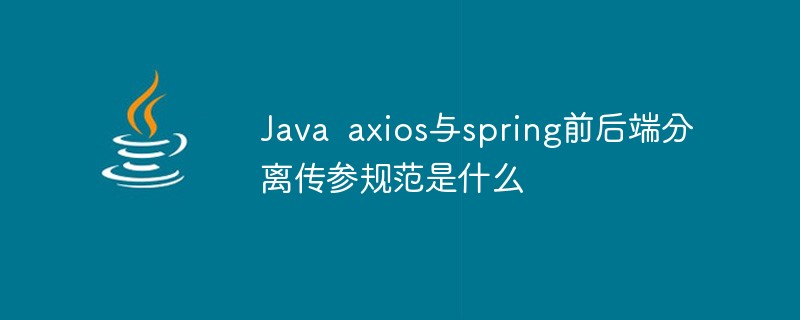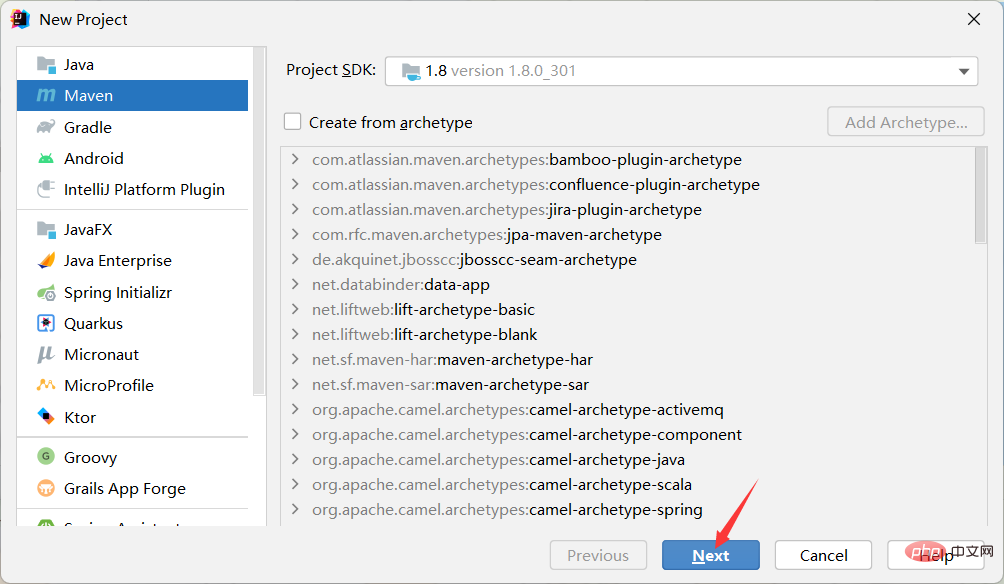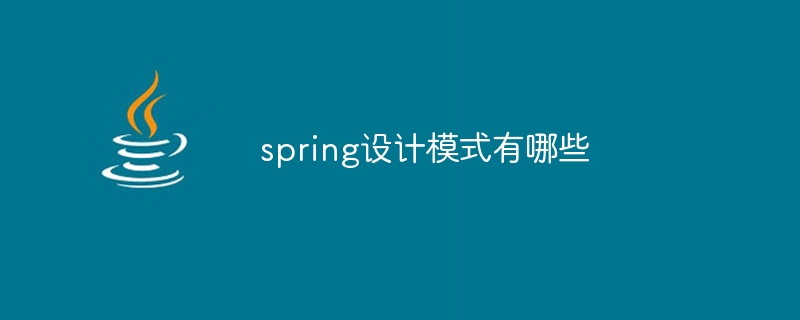spring cache can basically meet the cache needs of general applications, but the reality is always complicated. When your user volume increases or your performance cannot keep up, you always need to expand. At this time, you may provide memory cache for it. You are not satisfied because it does not support high availability and does not have the ability to persist data. At this time, you need to customize your caching solution. Fortunately, spring has also thought of this.
This article uses spring cache and Redis to integrate to achieve the cache you want.
Let’s configure redis first:
The first step is to install redis. For Baidu, we mainly configure redis.
Add a redis configuration file, which can be placed in the following directory
redis.host=192.168.0.43redis.port=6379redis.pass=2015redis.maxIdle=50redis.maxActive=50redis.maxWait=50redis.testOnBorrow=trueredis.timeout=1000
You also need to configure redis in the spring configuration file
<property-placeholder></property-placeholder> <bean> <property></property> <property></property> <property></property> <property></property> </bean> <bean> <property></property> <property></property> <property></property> <property></property> <property></property> </bean> <bean> <property></property> </bean>
Okay, the configuration of redis is completed.
Now let’s configure spring’s cache:
<?xml version="1.0" encoding="UTF-8"?> <beans><annotation-driven></annotation-driven> <!-- 缓存管理器 --> <bean> <property> <set> <bean> <property></property> <property></property> <property></property> </bean> <bean> <property></property> <property></property> <property></property> </bean> <bean> <property></property> <property></property> <property></property> </bean> <bean> <property></property> <property></property> <property></property> </bean> <bean> <property></property> <property></property> <property></property> </bean> <bean> <property></property> <property></property> <property></property> </bean> <bean> <property></property> <property></property> <property></property> </bean> <bean> <property></property> <property></property> <property></property> </bean> <bean> <property></property> <property></property> <property></property> </bean> <bean> <property></property> <property></property> <property></property> </bean> <bean> <property></property> <property></property> <property></property> </bean> <bean> <property></property> <property></property> <property></property> </bean> <bean> <property></property> <property></property> <property></property> </bean> <bean> <property></property> <property></property> <property></property> </bean> </set> </property> <!-- <property name="fallbackToNoOpCache" value="false"/> --> </bean> </beans>
In fact, the above configuration file has configured the relationship between redis and spring annotation cache into the spring’s xml file. .
The corresponding SystemRedisCache class is a custom cache implementation class that implements the cache interface.
import org.springframework.cache.Cache;import org.springframework.cache.support.SimpleValueWrapper;import org.springframework.dao.DataAccessException;import org.springframework.data.redis.connection.RedisConnection;import org.springframework.data.redis.core.RedisCallback;import org.springframework.data.redis.core.RedisTemplate;import org.springframework.util.StringUtils;/**
* 〈一句话功能简述〉<br>
* 〈功能详细描述〉
*
* @author Administrator
* @see [相关类/方法](可选)
* @since [产品/模块版本] (可选) */public class SystemRedisCache implements Cache {/** * Redis */private RedisTemplate<string> redisTemplate;/** * 缓存名称 */private String name;/** * 超时时间 */private long timeout;/* * (non-Javadoc)
* @see org.springframework.cache.Cache#getName() */@Overridepublic String getName() {return this.name;
}/* * (non-Javadoc)
* @see org.springframework.cache.Cache#getNativeCache() */@Overridepublic Object getNativeCache() {// TODO Auto-generated method stubreturn this.redisTemplate;
}/* * (non-Javadoc)
* @see org.springframework.cache.Cache#get(java.lang.Object) */@Overridepublic ValueWrapper get(Object key) {if (StringUtils.isEmpty(key)) {return null;
} else {final String finalKey;if (key instanceof String) {
finalKey = (String) key;
} else {
finalKey = key.toString();
}
Object object = null;
object = redisTemplate.execute(new RedisCallback<object>() {public Object doInRedis(RedisConnection connection) throws DataAccessException {byte[] key = finalKey.getBytes();byte[] value = connection.get(key);if (value == null) {return null;
}return SerializableObjectUtil.unserialize(value);
}
});return (object != null ? new SimpleValueWrapper(object) : null);
}
}/* * (non-Javadoc)
* @see org.springframework.cache.Cache#get(java.lang.Object, java.lang.Class) */@SuppressWarnings("unchecked")
@Overridepublic <t> T get(Object key, Class<t> type) {if (StringUtils.isEmpty(key) || null == type) {return null;
} else {final String finalKey;final Class<t> finalType = type;if (key instanceof String) {
finalKey = (String) key;
} else {
finalKey = key.toString();
}final Object object = redisTemplate.execute(new RedisCallback<object>() {public Object doInRedis(RedisConnection connection) throws DataAccessException {byte[] key = finalKey.getBytes();byte[] value = connection.get(key);if (value == null) {return null;
}return SerializableObjectUtil.unserialize(value);
}
});if (finalType != null && finalType.isInstance(object) && null != object) {return (T) object;
} else {return null;
}
}
}/* * (non-Javadoc)
* @see org.springframework.cache.Cache#put(java.lang.Object, java.lang.Object) */@Overridepublic void put(final Object key, final Object value) {if (StringUtils.isEmpty(key) || StringUtils.isEmpty(value)) {return;
} else {final String finalKey;if (key instanceof String) {
finalKey = (String) key;
} else {
finalKey = key.toString();
}if (!StringUtils.isEmpty(finalKey)) {final Object finalValue = value;
redisTemplate.execute(new RedisCallback<boolean>() {
@Overridepublic Boolean doInRedis(RedisConnection connection) {
connection.set(finalKey.getBytes(), SerializableObjectUtil.serialize(finalValue));// 设置超时间 connection.expire(finalKey.getBytes(), timeout);return true;
}
});
}
}
}/* * 根据Key 删除缓存 */@Overridepublic void evict(Object key) {if (null != key) {final String finalKey;if (key instanceof String) {
finalKey = (String) key;
} else {
finalKey = key.toString();
}if (!StringUtils.isEmpty(finalKey)) {
redisTemplate.execute(new RedisCallback<long>() {public Long doInRedis(RedisConnection connection) throws DataAccessException {return connection.del(finalKey.getBytes());
}
});
}
}
}/* * 清楚系统缓存 */@Overridepublic void clear() {// TODO Auto-generated method stub// redisTemplate.execute(new RedisCallback<string>() {// public String doInRedis(RedisConnection connection) throws DataAccessException {// connection.flushDb();// return "ok";// }// }); }public RedisTemplate<string> getRedisTemplate() {return redisTemplate;
}public void setRedisTemplate(RedisTemplate<string> redisTemplate) {this.redisTemplate = redisTemplate;
}public void setName(String name) {this.name = name;
}public long getTimeout() {return timeout;
}public void setTimeout(long timeout) {this.timeout = timeout;
}
}</string></string></string></long></boolean></object></t></t></t></object></string>The main methods are the get and put methods, and the logic inside is implemented according to our own needs.
Now there is a problem. We found that multiple caches are configured in the configuration file where spring configures its own annotation cache. So how does spring find the corresponding cacheManager? ?
We present it directly to you in code:
/**
*
* 公共接口
*
* @author Administrator
* @see [相关类/方法](可选)
* @since [产品/模块版本] (可选) */@Service("commonService")public class CommonServiceImpl implements CommonService {/** * 日志记录器 */private static final Logger LOGGER = LoggerFactory.getLogger(CommonServiceImpl.class);
@Autowiredprivate DalClient dalClient;/* * @Autowired RedisTemplate, ?> redisTemplate; *//** * 根据名称获取自增序列squence的当前值
*
* @param SequenceName 自增序列名称
* @return 自增序列当前值
* @see [相关类/方法](可选)
* @since [产品/模块版本](可选) */@Overridepublic String getSequenceByName(String SequenceName) {if (StringUtils.isEmpty(SequenceName)) {
LOGGER.error("自增序列名称为空,无法返回正常的自增序列值");return null;
} else {
Map<string> paramMap = new HashMap<string>();
paramMap.put("sequenceName", SequenceName);// 查询sequence当前值Map<string> resultMap = dalClient.queryForMap("common.GET_SEQUENCE_BY_NAME", paramMap);if (null != resultMap && !resultMap.isEmpty()) {return String.valueOf(resultMap.get("sequenceValue"));
} else {return null;
}
}
}/** * 根据上一级的城市编码 查询 所有下属城市 列表
*
* @param parentCityCode
* @return * @see [相关类/方法](可选)
* @since [产品/模块版本](可选) */@Override
@Cacheable(value = "commonService.queryCityListByParentCode", key = "new String('commonService.queryCityListByParentCode')+#parentCityCode.toString()", condition = "null != #parentCityCode")public List<citybean> queryCityListByParentCode(final Integer parentCityCode) {
Map<string> paramMap = new HashMap<string>();if (null != parentCityCode) {// 根据所选省份 \ 城市 查询所属城市列表paramMap.put("parentCityCode", parentCityCode);final List<citybean> cityListResult = dalClient.queryForList("T_CITY.SELECT_BY_PARENTCODE", paramMap,
CityBean.class);return cityListResult;
} else {final List<citybean> provinceListResult = dalClient.queryForList("T_CITY.SELECT_ALL_FIRST_STEP_CITY",
paramMap, CityBean.class);return provinceListResult;
}
}/** * 根据上一级的行业编码 查询 所有下属所有行业
*
* @param parentCityCode
* @return * @see [相关类/方法](可选)
* @since [产品/模块版本](可选) */@Override
@Cacheable(value = "commonService.queryIndustryListByParentCode", key = "new String('commonService.queryIndustryListByParentCode')+#parentIndustryCode.toString", condition = "null != #parentIndustryCode")public List<industrybean> queryIndustryListByParentCode(final Integer parentIndustryCode) {
Map<string> paramMap = new HashMap<string>();if (null != parentIndustryCode) {
paramMap.put("parentIndustryCode", parentIndustryCode);final List<industrybean> industryListResult = dalClient.queryForList("T_INDUSTRY.SELECT_BY_PARENTCODE",
paramMap, IndustryBean.class);return industryListResult;
} else {final List<industrybean> industryListResult = dalClient.queryForList("T_INDUSTRY.SELECT_ALL_FIRST_STEP_INDUSTRY", paramMap, IndustryBean.class);return industryListResult;
}
}/** * 根据行业编码查询 行业信息
*
* @param industryCode
* @return * @see [相关类/方法](可选)
* @since [产品/模块版本](可选) */@Override
@Cacheable(value = "commonService.queryIndustryInfoById", key = "new String('commonService.queryIndustryInfoById')+#industryCode", condition = "(null != #industryCode) and (#industryCode.length() > 0)")public IndustryBean queryIndustryInfoById(final String industryCode) {if (StringUtils.isEmpty(industryCode)) {return null;
} else {
Map<string> paramMap = new HashMap<string>();
paramMap.put("industryCode", industryCode);final IndustryBean industryInfoResult = dalClient.queryForObject("T_INDUSTRY.SELECT_BY_ID", paramMap,
IndustryBean.class);return industryInfoResult;
}
}/** * 递归删除 元素 因为可能存在重复的
*
* @param list 列表
* @param item 要删除的元素
* @see [相关类/方法](可选)
* @since [产品/模块版本](可选) */private void deleteListElement(ArrayList<string> list, String item) {if (null != list && !list.isEmpty() && StringUtils.isNotBlank(item)) {if (list.contains(item)) {
list.remove(item);if (list.contains(item)) {
deleteListElement(list, item);
}
}
}
}/** * 根据行业id查询 行业名称
*
* @param industryIds 行业Id可能有多个 以分号分隔
* @return 行业名称列表
* @see [相关类/方法](可选)
* @since [产品/模块版本](可选) */@Override
@Cacheable(value = "commonService.queryIndustryNameByIds", key = "new String('commonService.queryIndustryNameByIds')+#industryIds", condition = "null != #industryIds and #industryIds.length() > 0")public List<string> queryIndustryNameByIds(final String industryIds) {if (StringUtils.isBlank(industryIds)) {return null;
} else {
String[] industryIdArr = industryIds.split(";");if (null != industryIdArr && industryIdArr.length > 0) {
ArrayList<string> paramList = new ArrayList<string>();
paramList.addAll(Arrays.asList(industryIdArr));if (null != paramList && !paramList.isEmpty()) {
Map<string> paramMap = new HashMap<string>();
paramMap.put("industryIdList", paramList);// 查询行业列表List<industrybean> queryResultList = dalClient.queryForList("T_INDUSTRY.SELECT_BY_ID_LIST",
paramMap, IndustryBean.class);// 封装查询结果List<string> industryNameList = new ArrayList<string>();if (null != queryResultList && !queryResultList.isEmpty()) {// 遍历查询列表 将已经存在的编码去掉 剩下的 就是 根據编码查询不出行业的 直接将行业的名字返回 String tempId;for (IndustryBean industryInfo : queryResultList) {if (null != industryInfo) {if (null == industryInfo.getIndustryCode()) {continue;
} else {
tempId = industryInfo.getIndustryCode().toString();if (paramList.contains(tempId)) {
deleteListElement(paramList, tempId);
}if (StringUtils.isNotBlank(industryInfo.getIndustryName())) {
industryNameList.add(industryInfo.getIndustryName());
}
}
}
}
}// 将根据编码查询不出来 的 行业编码 直接返回 industryNameList.addAll(paramList);return industryNameList;
}
}return null;
}
}/** * 根据城市id查询 城市名称
*
* @param industryIds 行业Id可能有多个 以分号分隔
* @return 行业名称列表
* @see [相关类/方法](可选)
* @since [产品/模块版本](可选) */@Override
@Cacheable(value = "commonService.queryCityNameByIds", key = "new String('commonService.queryCityNameByIds')+#cityIds", condition = "null != #cityIds and #cityIds.length() > 0")public List<string> queryCityNameByIds(String cityIds) {if (StringUtils.isBlank(cityIds)) {return null;
} else {
String replacyedCityIds = cityIds.replace(";", ",");
String[] industryIdArr = replacyedCityIds.split(",");if (null != industryIdArr && industryIdArr.length > 0) {
ArrayList<string> paramList = new ArrayList<string>();
paramList.addAll(Arrays.asList(industryIdArr));if (null != paramList && !paramList.isEmpty()) {
Map<string> paramMap = new HashMap<string>();
paramMap.put("cityIdList", paramList);// 查询行业列表List<citybean> queryResultList = dalClient.queryForList("T_CITY.SELECT_BY_ID_LIST", paramMap,
CityBean.class);
List<string> industryNameList = new ArrayList<string>();if (null != queryResultList && !queryResultList.isEmpty()) {// 遍历查询列表 将已经存在的编码去掉 剩下的 就是 根據编码查询不出行业的 直接将行业的名字返回// 封装查询结果 String tempId;for (CityBean industryInfo : queryResultList) {if (null != industryInfo) {if (null == industryInfo.getCityCode()) {continue;
} else {
tempId = industryInfo.getCityCode().toString();if (paramList.contains(tempId)) {
deleteListElement(paramList, tempId);
}if (StringUtils.isNotBlank(industryInfo.getCityName())) {
industryNameList.add(industryInfo.getCityName());
}
}
}
}
}// 将根据编码查询不出来 的 行业编码 直接返回 industryNameList.addAll(paramList);return industryNameList;
}
}return null;
}
}/** * 查询第一级所有职位
*
* @return */@Overridepublic List<jobtypevo> queryFirstJobList() {/* * List<jobtypevo> redisIndustryListResult = redisTemplate.execute(new RedisCallback<list>>() {
* @Override public List<jobtypevo> doInRedis(RedisConnection connection) { byte[] industryListList =
* connection.get((RedisConstants.JOB_FIRST_LIST).getBytes()); if (null != industryListList &&
* industryListList.length > 0) { return (List<jobtypevo>) SerializableObjectUtil.unserialize(industryListList);
* } else { return null; } } }); if (null != redisIndustryListResult && !redisIndustryListResult.isEmpty()) {
* return redisIndustryListResult; } else { */final List<jobtypevo> queryIndustryListResult = dalClient.queryForList("T_JOB_TYPE.SELECT_FIRST_JOB_CODE",null, JobTypeVo.class);/* * if (null != queryIndustryListResult && !queryIndustryListResult.isEmpty()) { redisTemplate.execute(new
* RedisCallback<boolean>() {
* @Override public Boolean doInRedis(RedisConnection connection) {
* connection.set((RedisConstants.JOB_FIRST_LIST).getBytes(),
* SerializableObjectUtil.serialize(queryIndustryListResult)); return true; } }); } */return queryIndustryListResult;/* } */}/** * 查询 对应级别的职位信息
*
* @param typeValue
* @param jobCode
* @return */@Overridepublic List<jobtypebean> queryJobTypeList(final int typeValue, final int jobCode) {/* * List<jobtypebean> redisIndustryListResult = redisTemplate.execute(new RedisCallback<list>>() {
* @Override public List<jobtypebean> doInRedis(RedisConnection connection) { byte[] industryListList =
* connection.get((RedisConstants.JOB_FIRST_LIST + typeValue + jobCode) .getBytes()); if (null !=
* industryListList && industryListList.length > 0) { return (List<jobtypebean>)
* SerializableObjectUtil.unserialize(industryListList); } else { return null; } } }); if (null !=
* redisIndustryListResult && !redisIndustryListResult.isEmpty()) { return redisIndustryListResult; } else { */Map<string> paramMap = new HashMap<string>();
paramMap.put("typeValue", typeValue);
paramMap.put("jobFirstCode", jobCode);final List<jobtypebean> queryResult = dalClient.queryForList("T_JOB_TYPE.SELECT_BY_JOB_CODE", paramMap,
JobTypeBean.class);/* * if (null != queryResult && !queryResult.isEmpty()) { redisTemplate.execute(new RedisCallback<boolean>() {
* @Override public Boolean doInRedis(RedisConnection connection) {
* connection.set((RedisConstants.JOB_FIRST_LIST + typeValue + jobCode).getBytes(),
* SerializableObjectUtil.serialize(queryResult)); return true; } }); } */return queryResult;/* } */}/** * 判断学校是否 特殊学校
*
* @param schoolName 学校名称
* @param schoolType 学校分类(1:211 暂无其他)
* @return true:是, false:否
* @see [相关类/方法](可选)
* @since [产品/模块版本](可选) */@Override
@Cacheable(value = "commonService.isSpecialSchool", key = "new String('commonService.isSpecialSchool')+#schoolName + #schoolType", condition = "null != #schoolName and null !=#schoolType and #schoolName.length() > 0")public boolean isSpecialSchool(String schoolName, int schoolType) {if (StringUtils.isEmpty(schoolName)) {return false;
} else {
Map<string> paramMap = new HashMap<string>();
paramMap.put("schoolName", schoolName);
paramMap.put("schoolType", schoolType);
Map<string> resultMap = dalClient.queryForMap("T_MY_SPECIAL_SCHOOL.SELECT_BY_NAME_TYPE", paramMap);if (null != resultMap && !resultMap.isEmpty() && resultMap.containsKey("NUM")) {return (long) resultMap.get("NUM") > 0;
} else {return false;
}
}
}/** * 根据城市名称获取 城市所在 省份名称
*
* @param cityNames
* @return * @see [相关类/方法](可选)
* @since [产品/模块版本](可选) */@Override
@Cacheable(value = "commonService.getProvinceByCity", key = "new String('commonService.getProvinceByCity')+#cityNames", condition = "null != #cityNames and #cityNames.length() > 0")public String getProvinceByCity(final String cityNames) {if (StringUtils.isBlank(cityNames)) {return null;
} else {
String[] cityArr = cityNames.split("、");
Map<string> paramMap = new HashMap<string>();
Map<string> resultMap;
String provinceName;
List<string> provinceLait = new ArrayList<string>();for (String cityName : cityArr) {if (StringUtils.isNotBlank(cityName)) {
paramMap.put("cityName", cityName);
resultMap = dalClient.queryForMap("T_CITY.SELECT_PROVINCE_NAMEBY_CITY_NAME", paramMap);if (null != resultMap && !resultMap.isEmpty() && resultMap.containsKey("provinceName")) {
provinceName = String.valueOf(resultMap.get("provinceName"));if (!provinceLait.contains(provinceName)) {
provinceLait.add(provinceName);
}
}
}
}
StringBuffer sb = new StringBuffer(100);if (!provinceLait.isEmpty()) {for (int i = 0; i </string></string></string></string></string></string></string></string></boolean></jobtypebean></string></string></jobtypebean></jobtypebean></list></jobtypebean></jobtypebean></boolean></jobtypevo></jobtypevo></jobtypevo></list></jobtypevo></jobtypevo></string></string></citybean></string></string></string></string></string></string></string></industrybean></string></string></string></string></string></string></string></string></industrybean></industrybean></string></string></industrybean></citybean></citybean></string></string></citybean></string></string></string>The queryCityListByParentCode method is taken as an example:
There is the @Cacheable annotation on this method. This is the annotation cache tag added after spring 3.1. It will find the attribute value of value in the value = "commonService.queryCityListByParentCode" that we configured in the spring xml file. Search for the name attribute. After finding the corresponding configuration file, this method will implement the corresponding logic through our custom cache implementation class. If you are not clear about the meaning of spring annotations, you can first understand the meaning of spring cache annotations.
The above is the detailed content of Detailed introduction to the integration of spring cache and redis cache. For more information, please follow other related articles on the PHP Chinese website!
 Java Spring怎么实现定时任务May 24, 2023 pm 01:28 PM
Java Spring怎么实现定时任务May 24, 2023 pm 01:28 PMjava实现定时任务Jdk自带的库中,有两种方式可以实现定时任务,一种是Timer,另一种是ScheduledThreadPoolExecutor。Timer+TimerTask创建一个Timer就创建了一个线程,可以用来调度TimerTask任务Timer有四个构造方法,可以指定Timer线程的名字以及是否设置为为守护线程。默认名字Timer-编号,默认不是守护线程。主要有三个比较重要的方法:cancel():终止任务调度,取消当前调度的所有任务,正在运行的任务不受影响purge():从任务队
 Java axios与spring前后端分离传参规范是什么May 03, 2023 pm 09:55 PM
Java axios与spring前后端分离传参规范是什么May 03, 2023 pm 09:55 PM一、@RequestParam注解对应的axios传参方法以下面的这段Springjava代码为例,接口使用POST协议,需要接受的参数分别是tsCode、indexCols、table。针对这个Spring的HTTP接口,axios该如何传参?有几种方法?我们来一一介绍。@PostMapping("/line")publicList
 Spring Boot与Spring Cloud的区别与联系Jun 22, 2023 pm 06:25 PM
Spring Boot与Spring Cloud的区别与联系Jun 22, 2023 pm 06:25 PMSpringBoot和SpringCloud都是SpringFramework的扩展,它们可以帮助开发人员更快地构建和部署微服务应用程序,但它们各自有不同的用途和功能。SpringBoot是一个快速构建Java应用的框架,使得开发人员可以更快地创建和部署基于Spring的应用程序。它提供了一个简单、易于理解的方式来构建独立的、可执行的Spring应用
 Spring 最常用的 7 大类注解,史上最强整理!Jul 26, 2023 pm 04:38 PM
Spring 最常用的 7 大类注解,史上最强整理!Jul 26, 2023 pm 04:38 PM随着技术的更新迭代,Java5.0开始支持注解。而作为java中的领军框架spring,自从更新了2.5版本之后也开始慢慢舍弃xml配置,更多使用注解来控制spring框架。
 Java Spring框架创建项目与Bean的存储与读取实例分析May 12, 2023 am 08:40 AM
Java Spring框架创建项目与Bean的存储与读取实例分析May 12, 2023 am 08:40 AM1.Spring项目的创建1.1创建Maven项目第一步,创建Maven项目,Spring也是基于Maven的。1.2添加spring依赖第二步,在Maven项目中添加Spring的支持(spring-context,spring-beans)在pom.xml文件添加依赖项。org.springframeworkspring-context5.2.3.RELEASEorg.springframeworkspring-beans5.2.3.RELEASE刷新等待加载完成。1.3创建启动类第三步,创
 从零开始学Spring CloudJun 22, 2023 am 08:11 AM
从零开始学Spring CloudJun 22, 2023 am 08:11 AM作为一名Java开发者,学习和使用Spring框架已经是一项必不可少的技能。而随着云计算和微服务的盛行,学习和使用SpringCloud成为了另一个必须要掌握的技能。SpringCloud是一个基于SpringBoot的用于快速构建分布式系统的开发工具集。它为开发者提供了一系列的组件,包括服务注册与发现、配置中心、负载均衡和断路器等,使得开发者在构建微
 Java Spring Bean生命周期管理的示例分析Apr 18, 2023 am 09:13 AM
Java Spring Bean生命周期管理的示例分析Apr 18, 2023 am 09:13 AMSpringBean的生命周期管理一、SpringBean的生命周期通过以下方式来指定Bean的初始化和销毁方法,当Bean为单例时,Bean归Spring容器管理,Spring容器关闭,就会调用Bean的销毁方法当Bean为多例时,Bean不归Spring容器管理,Spring容器关闭,不会调用Bean的销毁方法二、通过@Bean的参数(initMethod,destroyMethod)指定Bean的初始化和销毁方法1、项目结构2、PersonpublicclassPerson{publicP
 spring设计模式有哪些Dec 29, 2023 pm 03:42 PM
spring设计模式有哪些Dec 29, 2023 pm 03:42 PMspring设计模式有:1、依赖注入和控制反转;2、工厂模式;3、模板模式;4、观察者模式;5、装饰者模式;6、单例模式;7、策略模式和适配器模式等。详细介绍:1、依赖注入和控制反转: 这两个设计模式是Spring框架的核心。通过依赖注入,Spring负责管理和注入组件之间的依赖关系,降低了组件之间的耦合度。控制反转则是指将对象的创建和依赖关系的管理交给Spring容器等等。


Hot AI Tools

Undresser.AI Undress
AI-powered app for creating realistic nude photos

AI Clothes Remover
Online AI tool for removing clothes from photos.

Undress AI Tool
Undress images for free

Clothoff.io
AI clothes remover

AI Hentai Generator
Generate AI Hentai for free.

Hot Article

Hot Tools

EditPlus Chinese cracked version
Small size, syntax highlighting, does not support code prompt function

ZendStudio 13.5.1 Mac
Powerful PHP integrated development environment

VSCode Windows 64-bit Download
A free and powerful IDE editor launched by Microsoft

SublimeText3 Mac version
God-level code editing software (SublimeText3)

Dreamweaver Mac version
Visual web development tools





